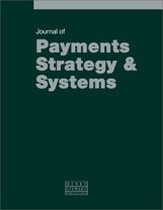The Brazilian payment market and its specifics: An interview with Ralf Germer
Abstract
Brazil, with its almost 204 million inhabitants, is the world’s fifth most populated country and also number five in terms of geographical size. It has the seventh largest economy in the world, with 40 million middle-income class consumers and 120 million internet users; there are only four bigger country markets in the world, and Portuguese is the fifth commonest language on the internet. Brazil has a modern banking sector, online and mobile banking is widely used, and banks are present even in the most remote areas of the country. But there are still 55 million unbanked Brazilians, which is 40 per cent of the adult population. Overall, Brazil has a very high rate of electronic payments usage in relation to cash, which is expected to reach 32 per cent in 2015. International businesses usually start monetising their e-commerce traffic from Brazil by processing credit cards from overseas. What they typically get are awful decline rates of up to 75 per cent. The main cause for that is the fact that around 70 per cent of all credit cards issued in Brazil, even Visa or MasterCard labelled, are limited to local payments in Brazilian real. Because of currency restrictions imposed by the Brazilian legislation, international card acquirers cannot process these. Apart from that, other local payment methods, such as Boleto Bancário, local debit cards and online banking transfer, account for close to half of all online transactions. In this interview, Ralf Germer, CEO of PagBrasil, explains why, by teaming up with PagBrasil, international merchants can overcome these hurdles.
The full article is available to subscribers to the journal.
Author's Biography
Diederik Bruggink is Managing Director of Bruggink Consultancy and is an independent international expert in cards, payments, and market infrastructures. During his career, he has led and worked on several international and high-visibility projects, mainly with a focus on cashless payments, across the whole payments value chain, from (e-commerce) merchant acquisition through to issuing banks and within card switching and card processing organisations. He was one of the key authors of the first three editions of the ‘World Payments Report’, and he makes regular appearances on conferences in the cards and payments industry. He is a member of the Editorial Board of the Journal of Payments Strategy & Systems.
